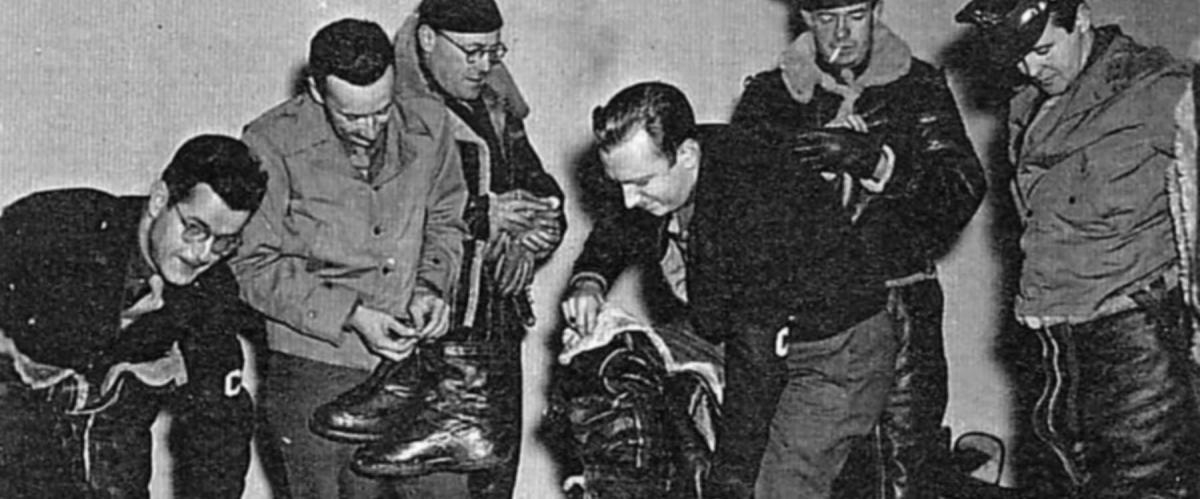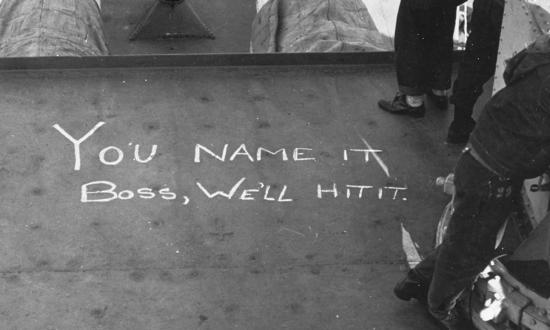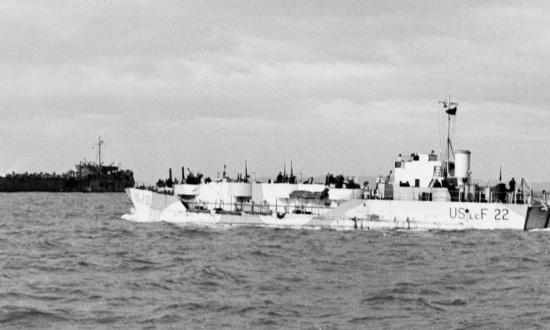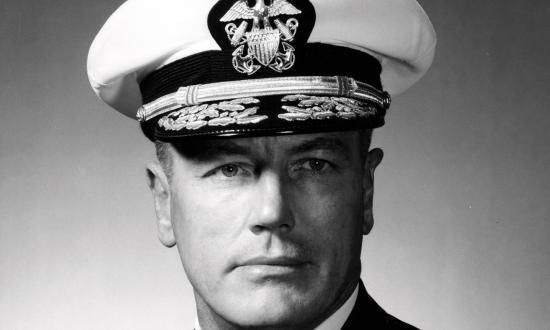The June 1994 issue of Naval History was a striking one. When the magazine set out to commemorate the 50th anniversary of the June 1944 Allied invasion of France, we offered several first-person points of view.
As a bonus, we provided a reporter’s account. Decades prior to his becoming anchor of The CBS Evening News—for which he won coveted TV broadcasting awards and became known as “the most trusted man in America”—Midwestern transplant Walter Cronkite was a credentialed newspaper war reporter for United Press. He flew with the Army’s Eighth Air Force 80 years ago as the Normandy invasion essentially unfolded before him on the beaches below.
Interviewing someone considered by many to be the greatest interviewer in the history of news reporting was a daunting yet exciting task in 1994. Early that year, Cronkite—in the office he retained after his retirement at CBS headquarters in midtown Manhattan—granted Naval History an interview.
Actually, Cronkite’s trusty “chief of staff,” Marlene Adler, was the one who granted us the strict time slot, because “Mr. Cronkite is extremely busy taping his Discovery Channel show [The Cronkite Report], so you can’t go overtime.”
At Cronkite’s insistence, we did anyway. “I’m in the middle of telling a good story, for heaven’s sake,” he told Marlene, who threw up her arms in surrender, then pointed to the TV cameras outside the boss’s office.
Coincidentally, the story he wished to finish pertained to his experiences filing news reports for UP from Great Britain during the planning stages of Operation Overlord, the code name for the attack on Nazi Germany’s beach and rail strongholds in the Normandy region of France—D-Day.
“I think I was one of the first correspondents accredited after Pearl Harbor,” Cronkite recalled. “I was with the United Press in Kansas City when they brought me to New York and sent me down to the Navy office at 90 Church Street to be accredited.”
Cronkite went on his first convoy—“at that time the biggest, fastest convoy that had ever been put together.” For this story, we found archived United Press reports presumably filed by Cronkite in London, the first with the dateline (four days before D-Day) “June 2, 1944—‘RAF bombers strike Nazi rail targets in Western Europe.’”
The communication techniques and capabilities from that time period are difficult to grasp in today’s era of instant reports from wherever the front may be. Communication satellites had yet to be launched into space 80 years ago. So Cronkite often was reporting on other reports—from Paris radio and cryptic information distributed from the Royal Air Force by way of the British Air Ministry.
Cronkite sensed what was in the offing, and he wanted to report from the scene. “Obviously, it would be a lot safer in London than on the beaches,” he admitted, “but I did want to be in on the action.”
His opportunity came with a surprise knock on his door, when, “in the middle of the night, around 1:30 in the morning, a dear friend, Hal Leyshon, who was a public relations captain in the [Army’s] Eighth Air Force, appeared suddenly at my door. He was an old poker-playing drinking buddy of mine. . . . He was very formal about it all and said in somber tones unlike him, ‘Is there anyone here besides you?’”
Cronkite went on to say that the reporters knew D-Day was approaching, but no one knew exactly when. Then the unexpected happened, and the reporter “won the secret draw” among his fellow correspondents. Cronkite would represent the entire U.S. press pool covering the story. “By good luck, I was assigned to the 303rd Bomber Group, with whom I had flown on the first mission to Germany and whose activities I had covered for some time. . . . All I knew was that the assignment would be dangerous, but the Eighth Air Force thought the story would be worth the risk.
The UP report on 3 June 1944 revealed U.S. air involvement in the softening of German strongholds: “United States Flying Fortresses and Liberators twice hammered the Pas de Calais and Boulogne areas of the French invasion coast Saturday while at least 2,000 other Allied warplanes swept over Northern France and Belgium in the greatest Nazi hunt since the pre-invasion blitz opened nearly two months ago.”
Cronkite supplemented that report with his previously unpublished memory of the details:
After encountering thick clouds that limited visibility, “the bomb bay doors were slammed shut . . . Then, we did the almost unthinkable. We returned to base in England with our bombs still on board. Despite terrible visibility in intensifying fog, we wended our way through the traffic jam of bombers coming and going and landed without incident. . . .”
Cronkite ended his Normandy anecdote sheepishly: “Perhaps the greatest danger I faced was returning to my office, where my boss unleashed his fury before I had a chance to explain my mission. My story, competing with those of our valiant colleagues on the beaches, understandably saw light of day in few newspapers.”






